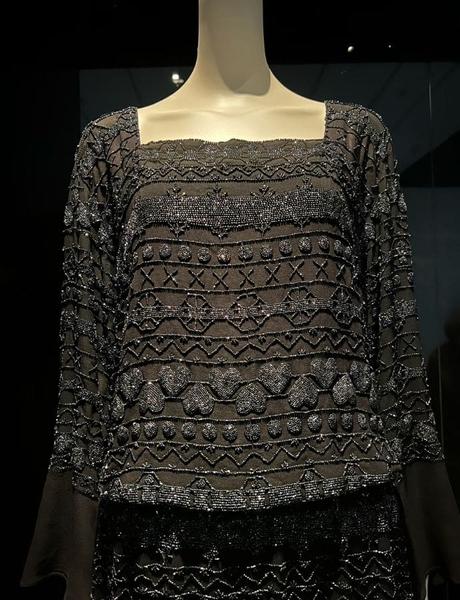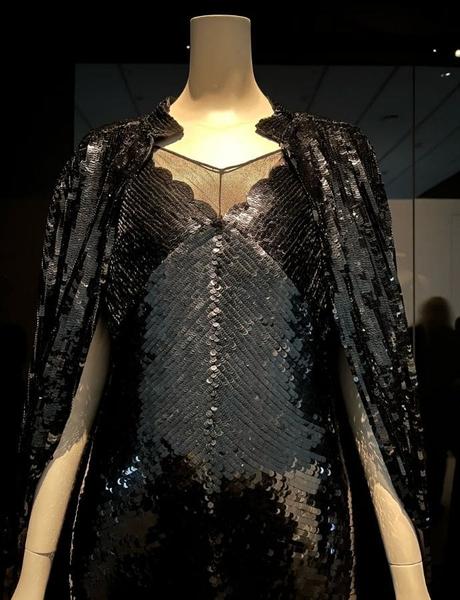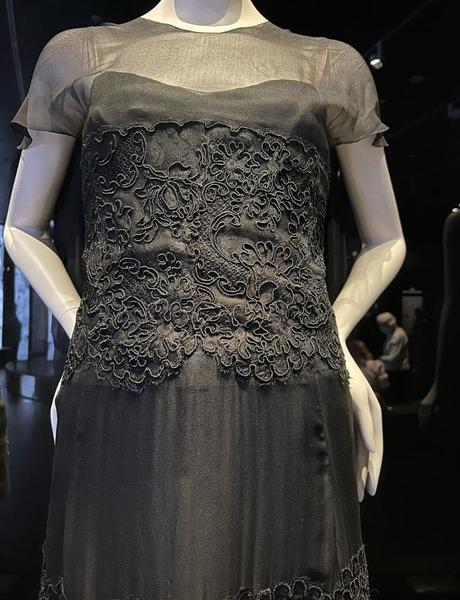The exhibition: Gabrielle Chanel, Fashion Manifesto is currently on display at the National Gallery of Victoria and, as I was making my way around the exhibits of over 100 of her gorgeous outfits what struck me, was just what you could learn about wearing black from Chanel.
Chanel was the instigator of black as a fashion colour. Prior to her, black was for mourning or service only. She personally didn't like the bright jewel colours of the day as she felt they were more suited to the stage. Her own colouring worked well with black as she had "Dramatic" Bright, cool dark colouring and for her black and white were staples, and as most designers start designing things they want to wear it doesn't surprise me that she enjoyed black.
Yet she was to have said "Nothing is more difficult to make than a little black dress" and when you compare her designs to modern day, you can see when you study her designs how her black clothing was a cut above everything made in the mass-market retail world today. What black does is provide a very obivious outline to the body so you can really see the edges and form of the garment (and the wearer's shape).
Here is an example of a suit from the 1920s. The lining of the suit matches the top underneath, and the white of the lining takes a way the harshness of black worn next to the face during the day. Even though she said "To my mind, simplicity is the kynote of all true elegance." This pattern is complex and if you look carefully you'll notice a tie belt at the waist, button tabs up the top as well as the bow at the neckline, plus the cuffs showing off the same pattern. Not a simple black suit by today's standards!
Another black suit - again exquisitely crafted with a metallic fleck in the black fabric that gives it life and movement which black garments usually don't have. Notice again the white lining (matching the white top) and rose fabric brooches on the lapel. White collar moving the shadowing and aging affect of black away from the face.

Check out the detail embroidered with bugle beads onto this gorgeous black evening number. The light that reflects off the beading and the complexity of the design take this outfit far away from being basic and ordinary, to something more extraordinary.
Even though Chanel described her black dresses as something anyone could wear (as in, you didn't have to be rich to have a Chanel black dress - her little black dress was known as the Ford of Fashion - described by Vogue magazine as a "sort of uniform for all women of taste, from all backgrounds, regarless of their walk of life"), She may have helped equate black with elegance and understatement, yet the hand-sewn finishes, superior fabrics and construction techniques and embellishment meant these were far from understated or affordable to the masses.
It's important to remember too, that indoor lighting was not bright and harsh like it is today and as black was relegated more to the evening than daytime, under soft lighting, with either sheerness next to the face or sparkle in the fabrication, it didn't have the same harshness that many black clothes have on skin today.

Sequins reflect light, shimmer and shine and draw attention to shape and construction.

Again there is nothing plain, truly simple, boring or bland in the construction and fabrics in each of these little black dresses designed by Chanel. And notice how the dresses have either a lower neckline or a sheer panel closer to the face to soften the dark shadowing effect of black.
When you get up close to these dresses you can see the level of detail in design and construction. I loved how the silk of the bodice is wrapped around the velvet bands to make it appear as if these two fabrics are woven together.
Red was a colour (and sometimes navy blues) that Chanel would also use in her evening wear. The red bodice softens the black, and notice the exquisite construction using the bias of the fabric (diagonal) that would create shape and movement in the dress as the wearer danced the night away.
Chanel was inspired to use black as a background so you could accessorise it and make it look more different.
Even her two-toned pump was designed with practicality in mind.
The beige of the upper elongates the leg, whilst the black of the toe which is the first part of the shoe to get scuffed, makes for a more practical and robust shoe that's more easily polished and also made the foot appear smaller.
Her 2.55 bag - with its iconic leather and chain strap was designed to be functional - the leather wound through the chain was done so to stop the chain from jangling and made it easy to carry over the shoulder. Inside there were multiple pockets where various items could be stored, including a compartment for lipstick.
And why was it called the 2.55 bag? In a typical pragmatic Chanel way (as with her No. 5 perfume) it was because it was first released in February 1955.
So what can we all learn from Chanel's use of black in clothes? That embellishment and exquisite construction take a black garment from drab and dull to chic and elegant. That these were garments made for night-time, not all day, every day. She was about practicality and comfort (no more corsets) in elegant and timeless designs, her black was never ever boring, it had movement and life.

